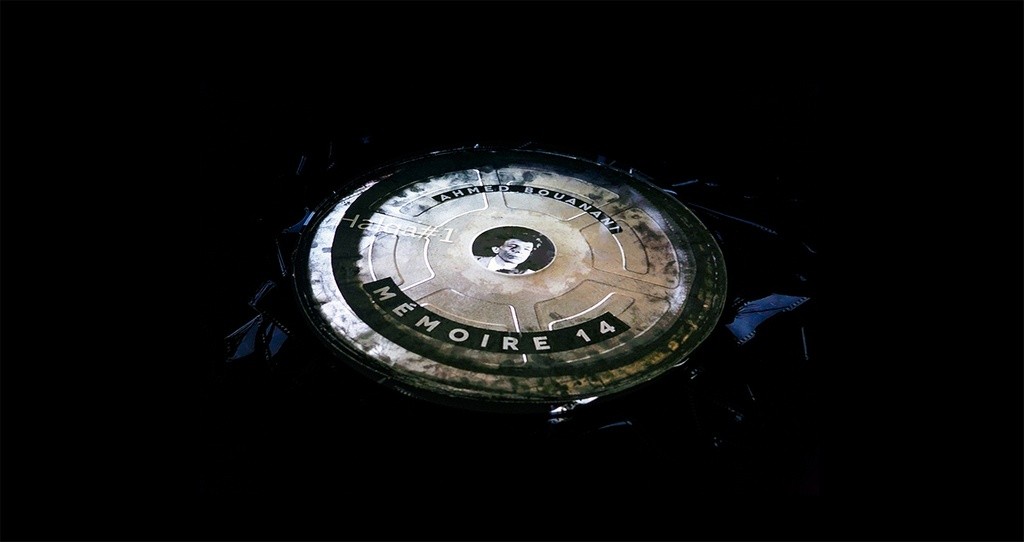Ahmed Bouanani
I want to possess in this world that which brings joy to the eyes…
27 May - 21 Aug 2016

Ali Essafi, Halakat Nord-Africaines (detail), 2014, installation view Witte de With Center for Contemporary Art 2016, photographer Aad Hoogendoorn
AHMED BOUANANI
I want to possess in this world that which brings joy to the eyes...
27 May - 21 August 2016
Participants: Ahmed Bouanani, Touda Bouanani, Ali Essafi
Curators: Natasha Hoare, Omar Berrada, Touda Bouanani
After the collective trauma of the colonial occupation of Morocco, a vanguard of artists forged cultural practices that sought to establish a new vision of the country, appealing to its ancient traditions passed down through oral culture. Filmmaker, poet, and writer Ahmed Bouanani (1938 – 2011) was a towering presence in this landscape, pioneering a cinematic and poetic language that influenced a generation to come.
Bounani’s daughter artist Touda Bouanani and curator Omar Berrada work together to stage presentations drawing from his extensive archive. Here, the platform Witte de With provides is used to enable the translation and subtitling of his short films into English for the first time, providing a stepping stone to the wider distribution of Bouanani’s work and an accompanying recognition of the value and power of avant-garde film making in Morocco and the Maghreb.
Operating between the censoring hand of the monarchy and its organs, and an absence of native filmic tradition, Bouanani was keenly aware of the vital need to use cinema to protect and revive the fragile memories that linked Morocco to its pre-colonial past. In this his training and talent as a film editor were key. The archive is an explicit presence in his films and poetry. Tarfaya was made whilst working at the Moroccan Cinema Center through the permissible format of the regional documentary; Mémoire 14 consists of re-cut films shot by the French during the conquest and so-called pacification of Morocco. Both explicitly make use of archival footage to address the ethnographic distancing typical to the colonial cinematic vision, and to strive towards a more nuanced self-image.
With sad irony his legacy itself is threatened with erasure by a house fire devastating a portion of his collection, and his withdrawal from the public sphere and subsequent neglect as a figure. This presentation acts against erasure, activating networks of distribution through translation, and presenting archival documents to paint a picture of his formidable life long output.
The presentation includes Halakat Nord-Africaines (2014) a video installation by Moroccan artist Ali Essafi based on research around the practice of three radical North African filmmakers, Azzedine Meddour, Ahmed Bennys, and Ahmed Bouanani, each active from the 1960’s onwards, whose films Essafi has restored and resurrected. Halaqat refers to the circle of people gathering around a storyteller in North Africa’s public squares. This traditional oral form inspired the region’s cinema at its origins, as well as other modern narrative genres, and intersects in their work with archival footage assembled to represent contemporary history and engender new cultural forms of post-colonialisation.
With Thanks To SUB-TI Subtitling
I want to possess in this world that which brings joy to the eyes...
27 May - 21 August 2016
Participants: Ahmed Bouanani, Touda Bouanani, Ali Essafi
Curators: Natasha Hoare, Omar Berrada, Touda Bouanani
After the collective trauma of the colonial occupation of Morocco, a vanguard of artists forged cultural practices that sought to establish a new vision of the country, appealing to its ancient traditions passed down through oral culture. Filmmaker, poet, and writer Ahmed Bouanani (1938 – 2011) was a towering presence in this landscape, pioneering a cinematic and poetic language that influenced a generation to come.
Bounani’s daughter artist Touda Bouanani and curator Omar Berrada work together to stage presentations drawing from his extensive archive. Here, the platform Witte de With provides is used to enable the translation and subtitling of his short films into English for the first time, providing a stepping stone to the wider distribution of Bouanani’s work and an accompanying recognition of the value and power of avant-garde film making in Morocco and the Maghreb.
Operating between the censoring hand of the monarchy and its organs, and an absence of native filmic tradition, Bouanani was keenly aware of the vital need to use cinema to protect and revive the fragile memories that linked Morocco to its pre-colonial past. In this his training and talent as a film editor were key. The archive is an explicit presence in his films and poetry. Tarfaya was made whilst working at the Moroccan Cinema Center through the permissible format of the regional documentary; Mémoire 14 consists of re-cut films shot by the French during the conquest and so-called pacification of Morocco. Both explicitly make use of archival footage to address the ethnographic distancing typical to the colonial cinematic vision, and to strive towards a more nuanced self-image.
With sad irony his legacy itself is threatened with erasure by a house fire devastating a portion of his collection, and his withdrawal from the public sphere and subsequent neglect as a figure. This presentation acts against erasure, activating networks of distribution through translation, and presenting archival documents to paint a picture of his formidable life long output.
The presentation includes Halakat Nord-Africaines (2014) a video installation by Moroccan artist Ali Essafi based on research around the practice of three radical North African filmmakers, Azzedine Meddour, Ahmed Bennys, and Ahmed Bouanani, each active from the 1960’s onwards, whose films Essafi has restored and resurrected. Halaqat refers to the circle of people gathering around a storyteller in North Africa’s public squares. This traditional oral form inspired the region’s cinema at its origins, as well as other modern narrative genres, and intersects in their work with archival footage assembled to represent contemporary history and engender new cultural forms of post-colonialisation.
With Thanks To SUB-TI Subtitling

